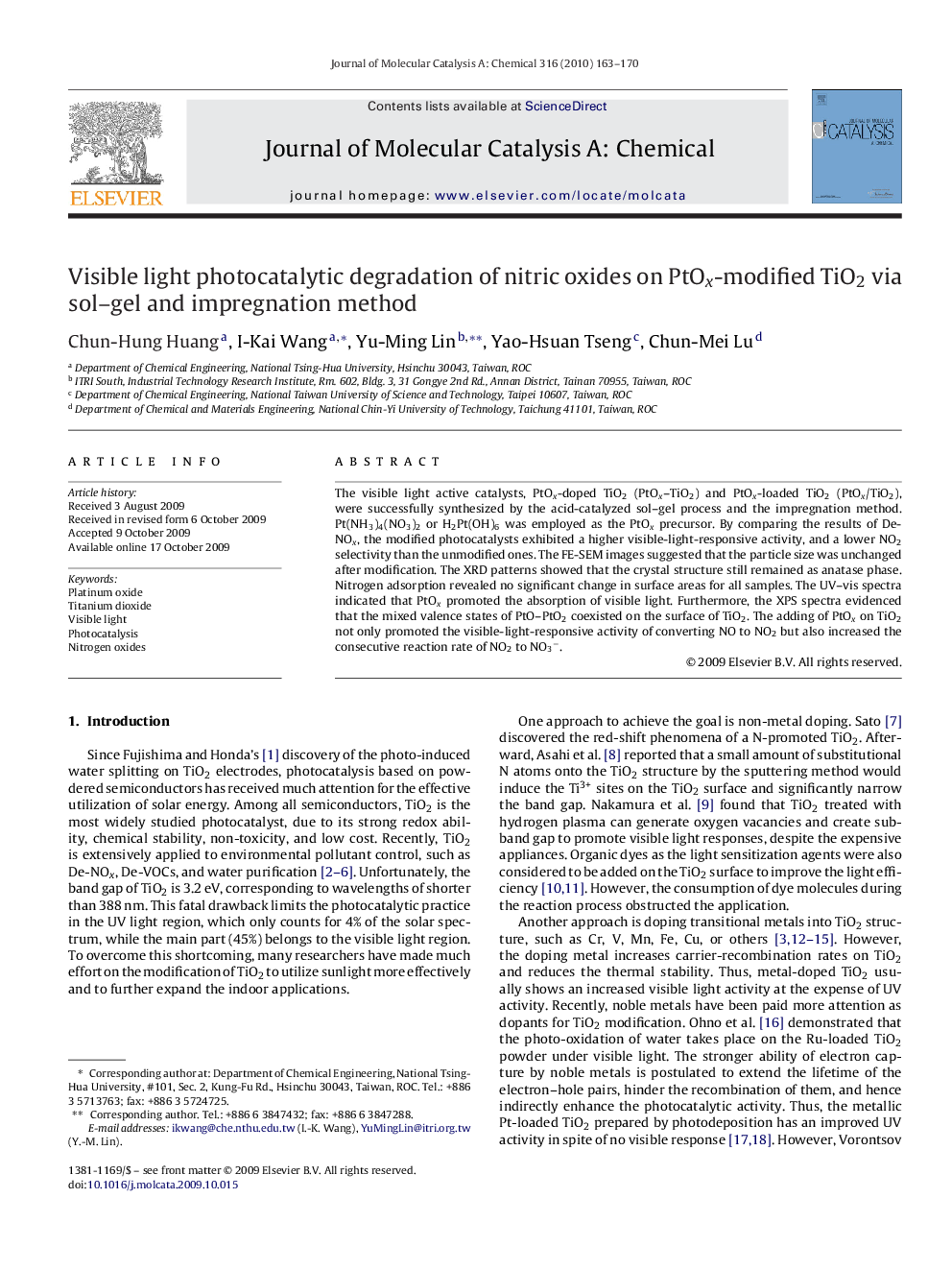| Article ID | Journal | Published Year | Pages | File Type |
|---|---|---|---|---|
| 66904 | Journal of Molecular Catalysis A: Chemical | 2010 | 8 Pages |
The visible light active catalysts, PtOx-doped TiO2 (PtOx–TiO2) and PtOx-loaded TiO2 (PtOx/TiO2), were successfully synthesized by the acid-catalyzed sol–gel process and the impregnation method. Pt(NH3)4(NO3)2 or H2Pt(OH)6 was employed as the PtOx precursor. By comparing the results of De-NOx, the modified photocatalysts exhibited a higher visible-light-responsive activity, and a lower NO2 selectivity than the unmodified ones. The FE-SEM images suggested that the particle size was unchanged after modification. The XRD patterns showed that the crystal structure still remained as anatase phase. Nitrogen adsorption revealed no significant change in surface areas for all samples. The UV–vis spectra indicated that PtOx promoted the absorption of visible light. Furthermore, the XPS spectra evidenced that the mixed valence states of PtO–PtO2 coexisted on the surface of TiO2. The adding of PtOx on TiO2 not only promoted the visible-light-responsive activity of converting NO to NO2 but also increased the consecutive reaction rate of NO2 to NO3−.
Graphical abstractThe 1% PtOx-modified TiO2 by sol–gel process or impregnation method, with PtO–PtO2 mixed valence states analyzed by XPS, promoted obviously visible light activity on degradation of NOx. The PtOx was not only considered to act as a sensitizer to respond to the visible light, but also advanced the total oxidation of NO and NO2 to NO3−.Figure optionsDownload full-size imageDownload as PowerPoint slide
